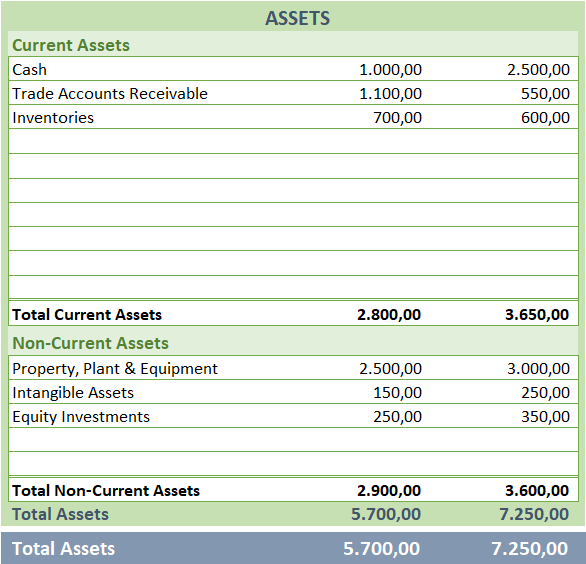Companies offering a service can face all sorts of problems if they don’t lay out their boundaries in a written, legally binding contract. Engagement letters essentially help protect firms from lawsuits while offering customers clarity over what services they can expect to receive and when. In short, they seek to avoid misunderstandings and basically function as a cheaper, simpler alternative to a regular contract. An engagement letter helps professionals and service providers clarify the nature of their mandate with their clients in a legally binding contract.
It’s crucial to have a written and signed engagement letter so the relationship between the professional and client is clear at all times. Engagement letters are typically signed when a client hires a lawyer, accountant or a professional for certain services. The professional or firm can be a lawyer, accountant, CPA, audit firm, tax services, real estate agency, banking firm, investment firm, consulting firm or any other professional services organization. Engagement letters are frequently used by accountants and bookkeepers when working with companies or individual clients. In fact, many insurance companies will require these in order to limit an accountant’s professional liability.
Harnessing automation: Tools for creating engagement letters quickly and easily
We’ll also show you tips to fully automate your engagement process using Ignition. Include details for any terms, conditions, or special agreements (such as retainers or contingency agreements) that may be invoked during the engagement term. Specify who the client is and who will be representing the client, and include all necessary identifying information (such as names, addresses, and contact details). This information can be especially important when representing a client within a larger organization. We’ll be in your inbox every morning Monday-Saturday with all the day’s top business news, inspiring stories, best advice and exclusive reporting from Entrepreneur.

Think about including a brief description of the service or item you are providing. You can also describe those in this section if the project involves multiple submissions. The individual who receives the engagement letter is a qualified representative of the client, such as the head of the company or the department manager. You can demonstrate that the letter’s contents are particular to that client relationship. The deadlines section of the engagement letter outlines the deadlines for completion of the services. This section should also include any penalties or fees that will be incurred if the deadlines are not met.
Scope of Services
But what exactly are they, how are they used, and why are they an important tool for accountants? Once the client engagement letter is in writing and signed right from the outset, chances of professional liability claims, malpractice claims or other types of claims or complaints can be minimized. The purpose of the engagement letter is to protect the professional service provider, on the one hand, but to clarify the essential terms of the mandate for the client. From the client side – a professional, branded, and thorough engagement letter creates a white-glove client experience and signals to new clients that they’re in good hands from beginning to end. Having a client ask for additional services is a great sign that your firm offers value, but often it’s done verbally and in an ad hoc style that is hard to invoice.
- GoCardless helps you automate payment collection, cutting down on the amount of admin your team needs to deal with when chasing invoices.
- A solid law firm engagement letter puts the details of those expectations in writing, right from the start.
- Without a written document, such as an engagement letter, that sets out precisely what will and will not be covered by the scope of a given service, either party can modify the terms of engagement.
- Contracts in law are not solely defined as written documents titled as such.
- Many parties also choose to include liabilities and limitations as part of their engagement letters.
- As taxpayers, we are accustomed to navigating the complex web of tax laws and regulations.
However, it is crucial to remember that the ultimate goal is not just about saying “yes” but about finding solutions that satisfy both the customer and the company without compromising safety and security. If the client’s responsibilities and obligations are not clear, you have fertile grounds leading to potential complaints and claims. However, the essential components of the letter of engagement will be similar. Depending on the type of engagement letter, you may have additional terms and conditions.
What is included in an engagement letter
To ensure the client understands the nature of the work to be performed, the fees that may be charged and other important aspects of the mandate, an engagement letter is required to put all these terms in writing. Preventing any type of misunderstanding with clients will not only protect your firm legally and financially, but will safeguard your firm’s reputation as well. With straightforward communication, clear project accounting pricing and well-outlined scope of work, your firm can create and maintain its reputation as a trustworthy partner that offers a great client experience. Engagement letters also include limitations of liability clauses that limit the amount of damages that the service provider may be liable for. These clauses protect the service provider from potential financial losses that may arise from the engagement.
Engaging a lawyer when drafting an engagement letter is beneficial for a multitude of reasons. A legal professional possesses the necessary expertise to ensure that the content of the letter is in compliance with the prevailing laws and regulations. Lawyers can also guide accountants in delineating the scope of work, roles, and responsibilities clearly, minimizing potential misunderstandings. Furthermore, they can help construct effective confidentiality clauses, dispute resolution procedures, and termination provisions.
Engagement letter examples
The compensation section should clearly state whether the service provider will be paid a fixed fee, an hourly rate, or a contingency fee. An engagement letter is an agreement for a services firm to provide services to a client. The letter is essentially an abbreviated contract that defines the services to be performed and the amount of compensation to be paid.
A letter of engagement describes the business and personal ties that bind two people together. The client who receives the product is one party, and the supplier of the good or service is another. The engagement letter is signed by representatives from both parties, making it a written document that is legally binding. It includes information on how the business is assisting the client as well as the payment it receives in exchange for its services. The scope creep section of the engagement letter outlines the limitations on the services that will be provided. This section should also include any additional fees or costs that will be incurred if the scope of services is expanded.
Over to you: Automate your manual processes and free up admin time
A taxpayer is responsible under self assessment to keep full and proper records in order to facilitate the preparation of a correct return. Whilst the Commissioner of Taxation will accept claims made by a taxpayer in an income tax return and issue a notice of assessment, usually without adjustment, the return may be subject to later review. Under the taxation law such a review may take place within a period of up to [ ] years after tax becomes due and payable under the assessment. Furthermore, where there is fraud or evasion there is no time limit on amending the assessment. Accordingly, you should check the return before it is signed to ensure that the information in the return is accurate.
In the event that this type of request occurs, you should include a provision in your letter for what will happen if the client’s instructions change, as it may be necessary to issue an amended letter of engagement. In this article, we will explore the purpose and importance of engagement letters, the key elements that should be included in the letter, and the benefits of using engagement letters in professional services. Whether you are a client or a service provider, understanding the role of engagement letters can help ensure a successful and mutually beneficial engagement.
Engagement letters should be updated or renewed regularly, typically on an annual basis or whenever there’s a significant change in the scope of work or terms of the agreement. We hope this article was useful and helped you better understand letters of engagement. There are many engagement letter samples you can find online if you are looking at how to write an engagement letter. Often, customers do not have the professional expertise or knowledge to understand the complexities of a mandate.
